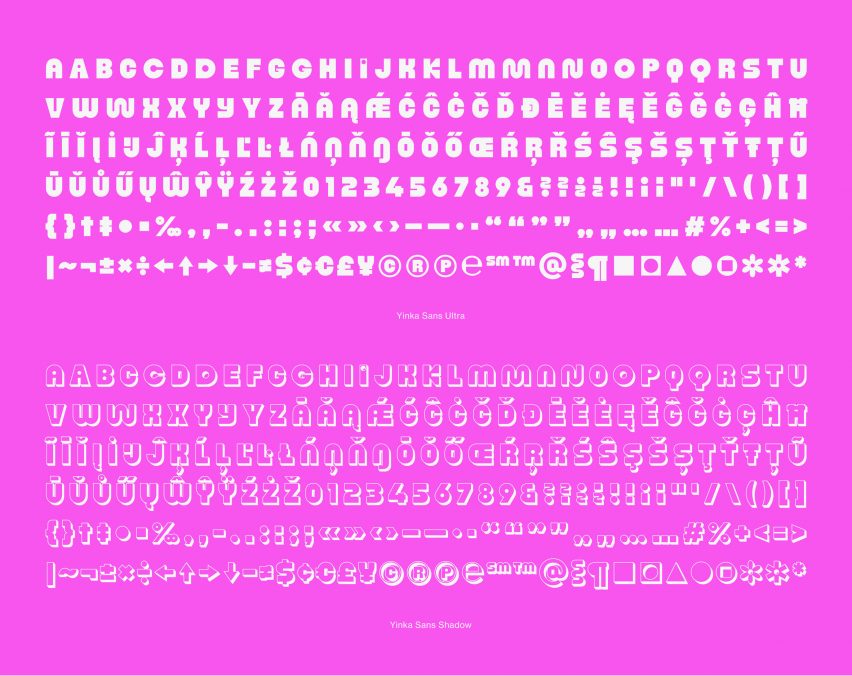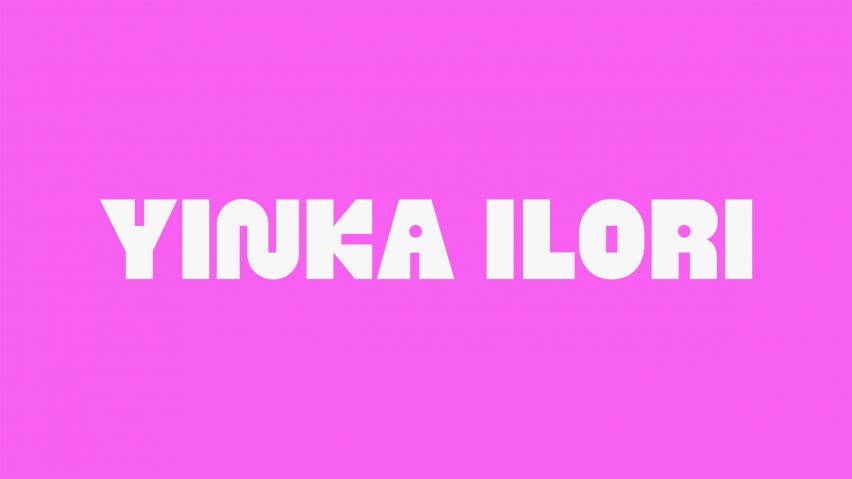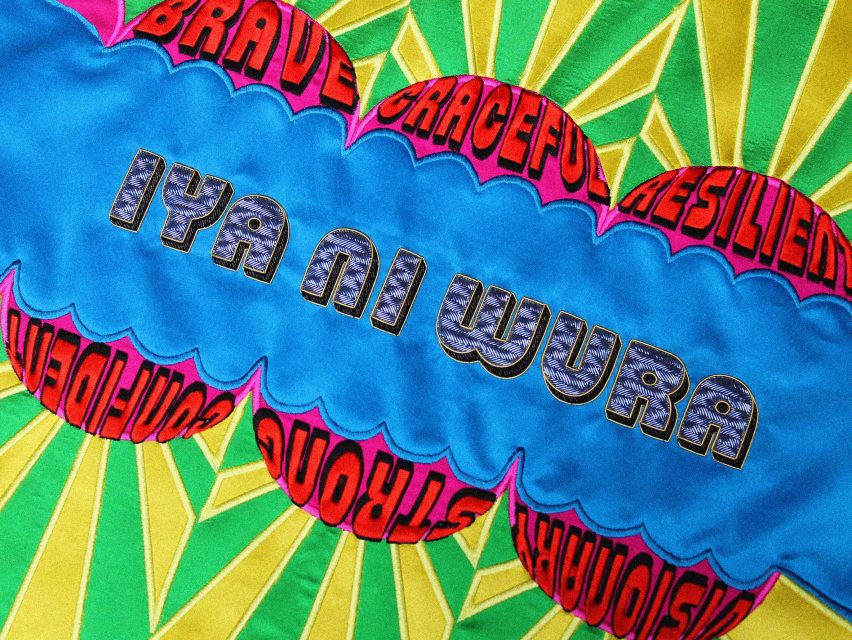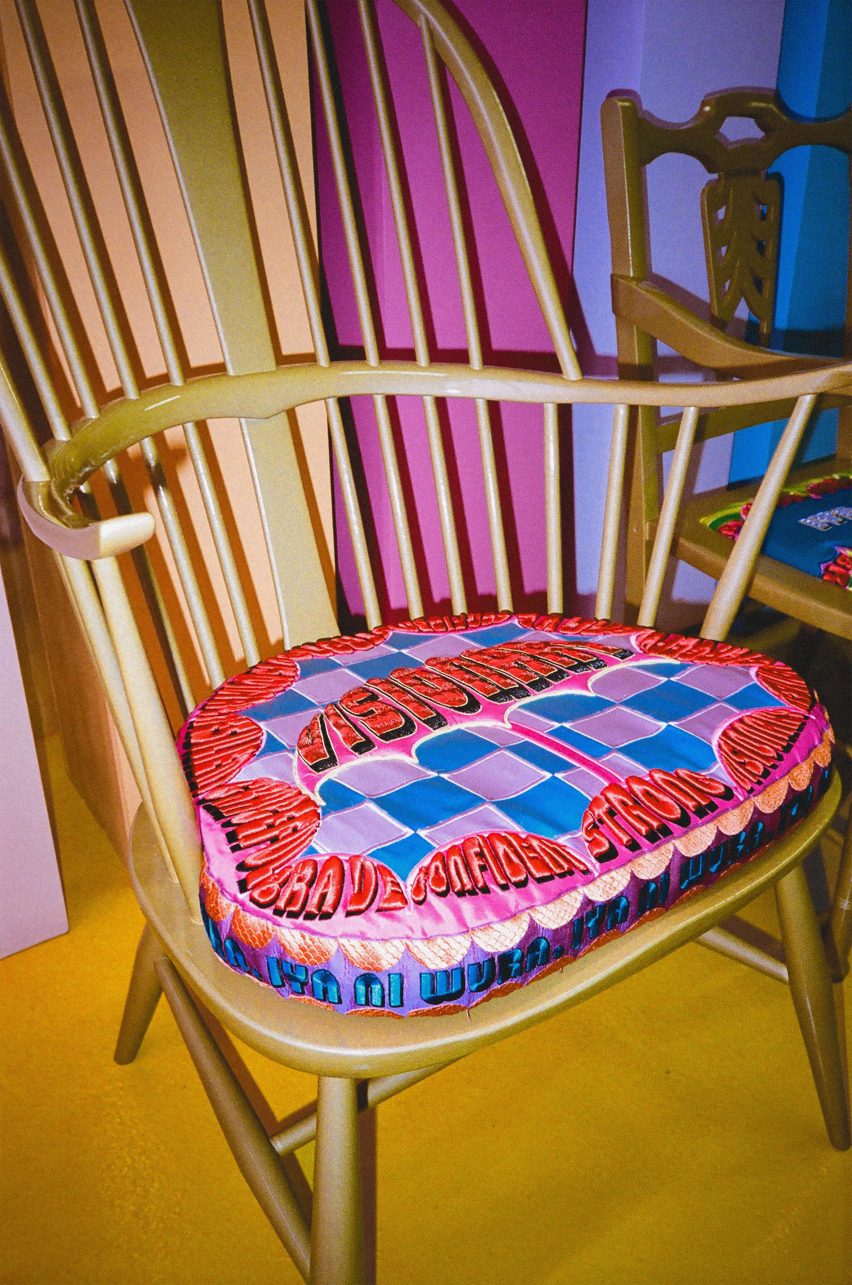Type foundry British Standard Type has developed a custom typeface for British-Nigerian designer Yinka Ilori that blends rounded and square shapes to reflect his dual heritage.
Ilori, who is known for his vibrant and playful designs, previously used a generic typeface across his different multidisciplinary projects but wanted something bespoke to embody his distinctive style.
The result of the collaboration with British Standard Type (BST) is a display typeface duo called Yinka Sans Ultra and Yinka Sans Shadow, which function as an extension of the designer’s visual identity.
“I’ve always been drawn to the idea of creating my own typeface as a way to tell a story through design,” Ilori told Dezeen.
“I love how certain fonts have the ability to inject meaning and personality into text and with Yinka Sans, it’s both unique and reflective of my work.”
Ilori gathered together a broad range of references to guide the design, borrowing from musical culture, architectural motifs, Nigerian folk vernaculars and contemporary popular culture.

These inspirations, along with his dual British-Nigerian heritage, informed a solution that combines playful, rounded forms with structured squared-off elements.
“My core values were strongly applied when curating Yinka Sans Ultra and Yinka Sans Shadow, as it’s through the bright colours, different shapes and playful designs that I had the opportunity to bring a firm sense of optimism and inclusivity to the text,” Ilori said.

BST crafted the typeface’s two cuts to ensure they achieve the expressive visual style Ilori requested while achieving the necessary level of functionality and readability.
“I wanted the typeface to retain its soul and flair without compromising too much on practicality so that it can be used effectively in various applications,” Ilori added.

“Yinka’s thoughtful approach to his craft, coupled with his infectious enthusiasm and ambition to infuse the overlooked with beauty and joy, profoundly influenced every facet of our collaboration,” said Matthew Fenton of BST.
“It’s been an honour to contribute to bringing Yinka’s vision to life and we eagerly anticipate the continued impact of Yinka Sans in furthering his broader mission of celebrating diversity and spreading some much-needed joy into the world.”

The design of Yinka Sans Ultra, with its dynamic forms and bold colour options, is complemented by a version that references Ilori’s use of shadow effects.
The array of stylistic sets provides a toolkit that can be used across the designers multifaceted projects, from printed surfaces to three-dimensional structures and objects.
The designer is currently using the font for installations and fruniture such as the embroidered upholstery for his Iya Na Wura furniture collection. Future applications are likely to include public art projects and exhibition designs.

Ilori’s humorous, provocative and playful designs seek to bring communities together and have a positive impact on society by evoking a sense of joy and optimism.
In an interview with Dezeen in 2022 he explained how he uses colour to start conversations and inject fun into projects such as a pavilion with multi-hued facades created in collaboration with architecture office Pricegore for the 2019 London Festival of Architecture.
His recent work includes a mirrored pavilion intended to encourage reflection of racism in sport ahead of the Euro 2024 football tournament and an installation in east London featuring two oversized chairs decorated with vibrant prints.

